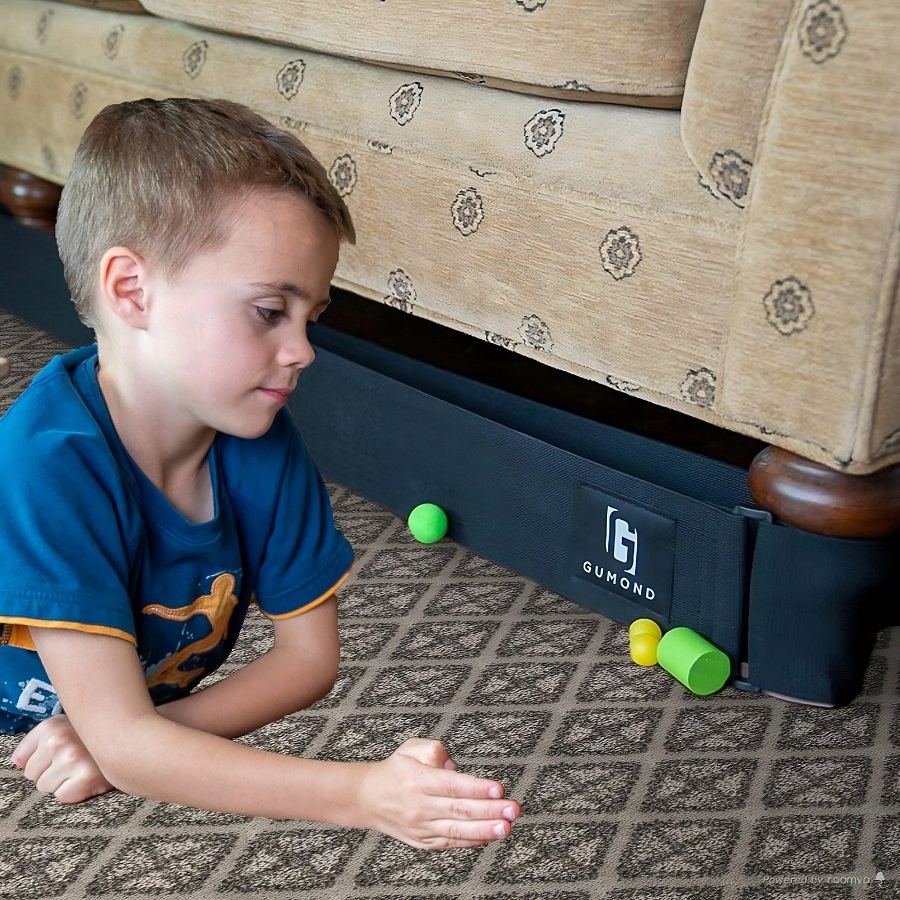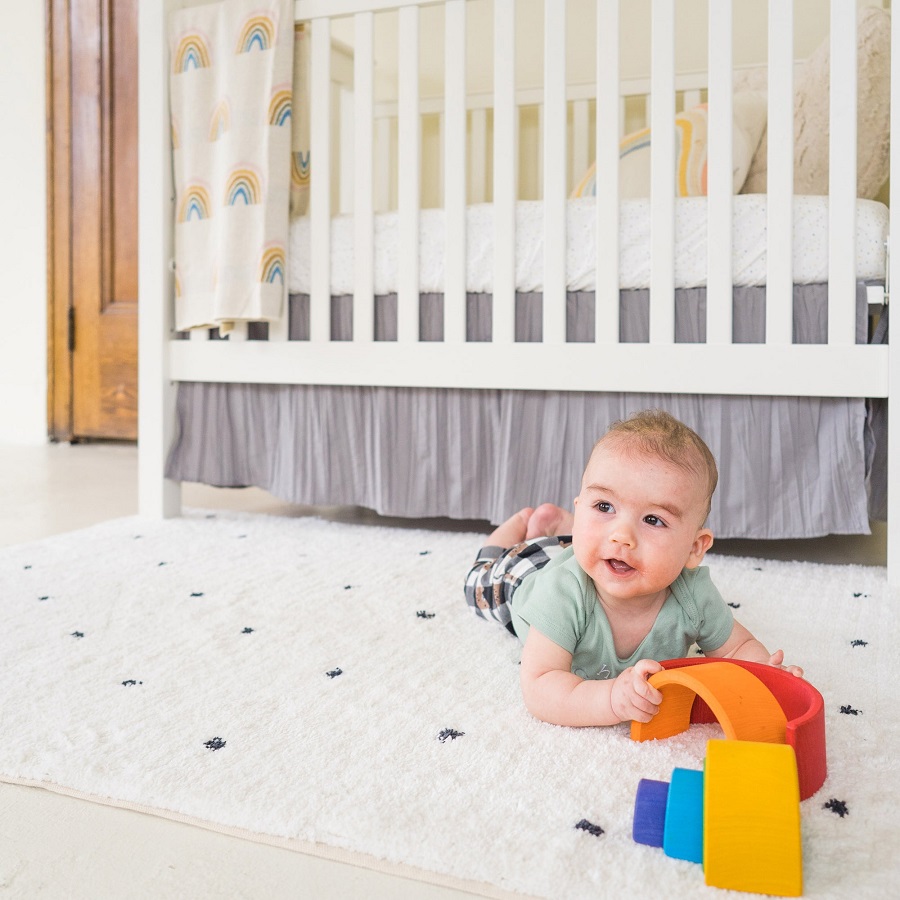Initial Steps to Take After a Baby Falls Off a Bed
When your baby falls off a bed, it’s crucial to stay calm and assess the situation quickly. Here are some initial measures to follow immediately after the fall:
- Do Not Move Your Baby Rashly: Avoid picking up your baby quickly. Check for any signs of injury before moving them.
- Look for Signs of Consciousness: Gently call your baby’s name and check if they respond or make any noises.
- Examine for Visible Injuries: Carefully observe your baby for any cuts, bruises, or unusual positioning of limbs that may suggest a fracture or sprain.
- Monitor Their Breathing: Ensure your baby is breathing normally and does not exhibit signs of distress or irregular breathing patterns.
- Calm Your Baby: If your baby cries after the fall, it can be a good sign, as crying indicates they are breathing and conscious. Comfort them with gentle touches and soothing words.
- Call for Medical Assistance if Needed: If your baby shows any serious symptoms or you’re unsure about the severity of the fall, don’t hesitate to call your pediatrician or seek immediate medical help.
- Keep Your Baby Still and Comfortable: While you wait for medical care or before you’re able to fully check your baby, keep them still on a flat surface to prevent further injury.
These steps are designed to ensure the immediate safety of your baby after a fall. As you attend to your baby, try to remember details about how they fell onto the carpet and relay this information to medical professionals, if necessary. Remember, your prompt and composed response can make a significant difference in such a situation.

Signs of Serious Injuries to Look Out For
After your baby falls, certain signs may mean serious injuries. Be alert for the following symptoms:
- Unconsciousness or Lack of Response: If your baby does not wake up or respond to your voice, it’s a serious concern.
- Irregular Breathing: Struggling for breath or any abnormal breathing patterns need immediate attention.
- Continuous Crying: Non-stop crying can suggest pain from an injury. Pay close attention to the type of cry.
- Vomiting: If your baby vomits repeatedly, this could indicate a concussion or other serious issue.
- Seizures: Any unusual twitching or convulsions are a sign to seek immediate medical help.
- Drowsiness or Confusion: If your baby seems unusually sleepy or confused after a fall, consult a doctor.
- Blood or Clear Fluid from Nose or Ears: This can signal a severe head injury and warrants quick action.
- Uneven Pupils or Vision Issues: Check if pupils are the same size or if your baby follows objects with their eyes.
- Difficulty with Normal Movements: Trouble crawling, sitting up, or moving limbs can indicate serious injuries.
- Swelling or Indentation on Head: A visible bump or dent on the skull needs a doctor’s evaluation.
If you notice any of these symptoms after your baby baby falls off bed onto carpet, get medical help right away. In less clear cases, it’s better to err on the side of caution and consult your pediatrician.
How to Check for Concussions and Internal Injuries
After your baby falls, checking for concussions and internal injuries is essential. Here’s how to evaluate your child:
Look for Signs of a Concussion
Be alert for these symptoms that could point to a concussion:
- Confusion or disorientation: If your baby seems confused or dazed.
- Loss of balance: Difficulty sitting up or crawling.
- Vomiting: Multiple instances could suggest a concussion
- Excessive crying: Non-stop crying may indicate distress from head trauma.
- Drowsiness: Unusual sleepiness or trouble waking could be a sign.
Identify Possible Internal Injuries
Internal injuries are not always visible, so consider these indicators:
- Behaviour changes: Any significant shift in demeanor or activity level.
- Breathing issues: Pay attention to any erratic or labored breathing.
- Responsive to touch: Look for areas where your baby seems sensitive or in pain.
- Abnormal crying or irritability: Ongoing, inconsolable crying can be a worry.
In any instance where a concussion or internal injury is suspected, seeking immediate medical attention is crucial. Remember, a baby’s symptoms can often be subtle, so if in doubt, always consult a healthcare professional. Keep these checks simple and be gentle when examining your baby, as rough handling could worsen any potential injuries.

Home Care for Minor Bumps and Bruises
When your baby has a minor fall onto a carpet, it’s often enough to provide home care. Here’s how you can help your little one recover from bumps and bruises:
- Apply a Cold Pack: Use a cold compress or ice wrapped in a cloth. Hold it on the bump for 20 minutes.
- Keep Them Comforted: Offer extra cuddles and reassurance to soothe any distress.
- Use Pain Relief if Necessary: If your child seems in pain, acetaminophen or ibuprofen can help. Follow the dosage recommended for their age and weight.
- Rest and Observe: Allow your baby to rest. Watch for any signs of worsening symptoms.
- Distraction: Engage in gentle play or read a story to distract them from the discomfort.
- Elevate the Area: If there is a bruise, raise the affected part to reduce swelling.
Always avoid aspirin, as it can cause serious issues in children. Small bumps often get better on their own. However, keep an eye on your baby. If you’re worried about any symptoms, call a doctor. Most falls result in minor injuries, but it’s best to be cautious with babies.
When to Take Your Baby to an Emergency Room
After a fall, most babies suffer minor injuries, yet some may require emergency care. Here’s when to seek urgent medical help:
- Loss of Consciousness: If your baby won’t wake up or doesn’t respond to your voice or touch.
- Difficulty Breathing: Notice any abnormal breathing patterns or if your baby is gasping for air.
- Uncontrollable Bleeding: If there’s a wound that won’t stop bleeding after applying pressure.
- Seizures: Should your baby display any unusual twitching or convulsions post-fall.
- Obvious Bone Injury: If a limb appears bent in an unnatural position or your baby refuses to use a limb.
- Fluids from Ears or Nose: Clear fluid or blood from ears or nose can indicate a serious head injury.
- Continuous Vomiting: Repeated vomiting may be a sign of a concussion or other internal issues.
- Non-responsive or Dazed: If your baby seems excessively sleepy, confused, or does not recognize you.
In cases of head injury and other serious symptoms, speed is essential. Call emergency services or go to the ER immediately. Keep a close eye on your baby’s condition and act swiftly if their health seems at risk.
How to Calmly Handle a Baby’s Fall
Dealing with your baby’s fall can be stressful, but staying calm is key for both you and your baby. Here’s what you can do:
- Stay Composed: Take deep breaths and approach your baby gently. Your calmness is reassuring.
- Speak Softly: Use a soothing voice to comfort your baby, letting them know you’re there.
- Check Gently: Carefully look over your baby for injuries without moving them abruptly.
- Comfort and Console: Hold your baby if they are not severely hurt, to provide security.
- Assess the Situation: Quickly but calmly determine if your baby needs medical attention.
- Seek Help if Needed: Call your pediatrician or go to the ER if you suspect serious injuries.
- Observe Quietly: Watch your baby for any changes in behavior or new signs of pain.
- Stay Nearby: Keep close to your baby after the fall, so they feel safe and watched over.
By following these steps, you can manage the situation with assurance and attentiveness, reducing stress for both you and your child.
Preventative Measures to Avoid Future Falls
Taking steps to prevent falls is essential to keeping your baby safe. Here are practical measures you can implement:
- Use Safety Gates: Install gates at the top and bottom of stairs and doorways.
- Secure Windows: Fit windows with guards or locks to prevent your baby from falling out.
- Crib Safety: Ensure crib slats are less than 2 3/8 inches apart. Lower the crib mattress when your baby can stand.
- Remove Hazards: Keep floors clear of toys and clutter that could trip your baby.
- Furniture Security: Anchor heavy furniture to walls. Keep all cords and sharp objects out of reach.
- Monitor on Elevated Surfaces: Never leave your baby unattended on a bed, changing table, or any high surface.
- Purchase Non-Slip Rugs: Use skid-proof rugs or mats to reduce the risk of slips.
- Watch Close to Edges: Be extra cautious around edges of beds and sofas. Don’t place your baby close to an edge.
- Educate Caregivers: Make sure anyone caring for your baby knows these safety tips.
- Supervise Playtime: Stay within arm’s reach, especially when your baby is learning to crawl or walk.
By making these changes, you can minimize the risk of your baby baby falls off bed onto carpet or other surfaces. Keep your home safe and give yourself peace of mind.

Understanding the Risk of Serious Injuries from Falls
When a baby falls off a bed onto a carpet, the risk of serious injury is there, but often less than if the fall was onto a hard surface. Carpet can provide some cushioning, which may reduce the impact. Still, being vigilant is important, as serious injuries can occur even with the perceived safety of a softer landing spot. Parents and caregivers should be aware of the risks and know what signs to look for that could indicate a serious injury.
It’s essential to note that the younger the child, the greater the risk, as their skulls and bones are not fully developed. Commonly, falls can result in head injuries like concussions, internal bleeding, or even fractures, despite the softer landing on a carpet. It’s also worth mentioning that falls are among the top reasons for accidental injuries in children, so prevention should always be a priority.
If your baby falls off bed onto carpet, closely monitor them for any changes. Unusual behavior, persistent crying, or signs of drowsiness should trigger a call to your pediatrician or a visit to the emergency room. Even without obvious signs of injury, if your intuition tells you something is not right, it’s better to have your child checked by a professional.
By understanding the risks and knowing how to respond, you can ensure the best care for your baby after a fall. Keep the environment safe to minimize risks and always supervise your baby during play and sleep times.
